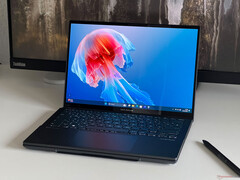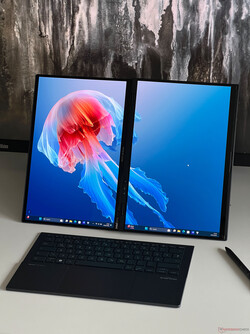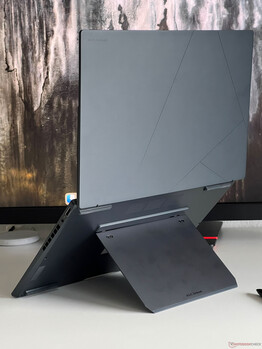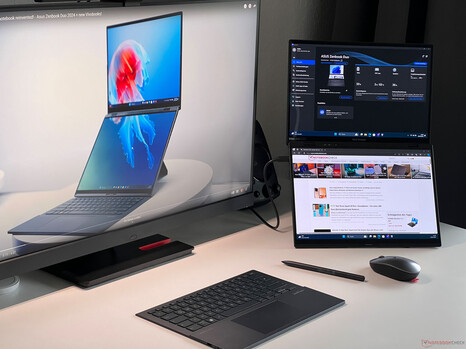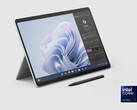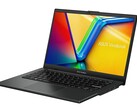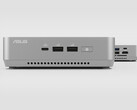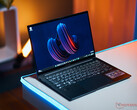Asus has been offering laptops with two displays for the past several years in the Zenbook Duo models. In addition to the main display, a smaller display was usually installed above the keyboard, which often meant compromises to the input devices. The new Zenbook Duo OLED (2024), however, now takes a different approach, featuring two identical 14-inch OLED panels and an attachable keyboard unit that can be magnetically attached to the top of the base unit (i.e. to the second display).
Our review shows the great advantage of this solution because the keyboard unit (including clickpad) is of very good quality with a travel of 1.4 mm. Hence, the new Zenbook Duo can be used as a normal notebook and users are not forced to use both screens. The only compromise compared to a regular laptop or convertible is the thicker and heavier case, although these problems were also present in the previous Zenbook Duo models.
The preinstalled ScreenXpert software helps to greatly simplify the use of both touchscreens. Active windows can be arranged quickly and easily here, or you can also mirror the content if you want to show something to someone beside you. Thanks to the built-in kickstand, the device can also be set up in a relatively space-saving way. However, the kickstand doesn't seem to have been well thought-out, as the device wobbles a little when placed in book mode. Optionally, a virtual keyboard can also be displayed on the lower touchscreen, but feels a little strange without haptic feedback.
Multi-screen use also benefits enormously from the fact that Asus uses two identical screens, which prevents any scaling problems and the picture quality is also identical, so you don't have the feeling of having to compromise on quality (such as on the old Zenbook Duo displays). The OLED panels from Samsung are the 3K model (2880 x 1800) with 120 Hz and full P3 coverage that we already know from the regular Zenbook 14 OLED (2024). The picture quality is very good and the HDR capabilities are also impressive (up to 650 nits).
The heart of the convertible is Intel's Core Ultra 9 185H Meteor Lake chip, which does not utilize its maximum performance capabilities at all in the Zenbook Duo, but the overall results are decent. We would have preferred an up-to-date AMD processor (more efficient and faster), but these are rarely found in convertibles. With the new Arc-iGPU, Intel is able to match the Radeon 780M, at least in the synthetic benchmarks. Performance is still worse in games and there are still problems with the drivers, but this could well be resolved with future updates.
Of course, the battery runtimes are also interesting and here it depends massively on whether you only use one or two displays. However, the runtimes are generally decent: we carried out a lot of battery tests for our extensive review.
Overall, Asus' new Zenbook Duo OLED (2024) is a very interesting device that impresses above all with its sophisticated operating concept. Thanks to the good keyboard, users are not forced to accept compromises such as on Lenovo's Yoga Book 9i and new users can gradually adjust to the second display without being forced to do so immediately. In our opinion, anyone currently looking for a device with two screens cannot avoid the new Zenbook Duo. All further details including extensive benchmarks and measurement results are available in our review.




